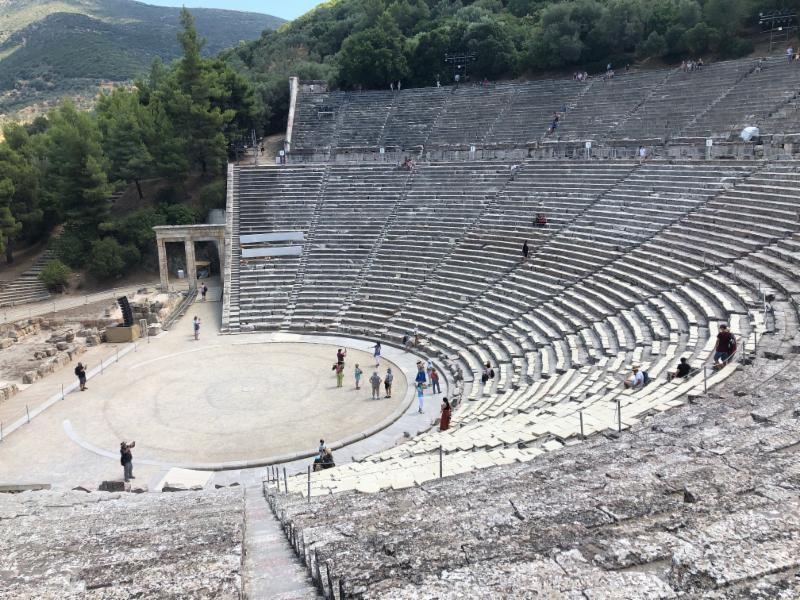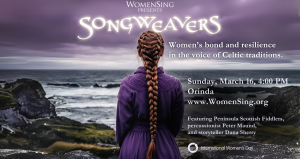
July 13th, Day 7
Submitted by: Jessica Takano
On Saturday, we ventured further from Athens, into the Argolis region of Peloponnese. Crossing over the Canal of Corinth, we learned that it was constructed in the late 1800s. As with everything in Greece, however, it has its roots in antiquity. The canal is in the location of the Diolkos road, which had been in use since the 6th century b.c. as an overland route for ships and their cargo. The idea for a canal originated with Emperor Nero (when Greece was under Roman rule), who began construction but died before it could be completed.
the late 1800s. As with everything in Greece, however, it has its roots in antiquity. The canal is in the location of the Diolkos road, which had been in use since the 6th century b.c. as an overland route for ships and their cargo. The idea for a canal originated with Emperor Nero (when Greece was under Roman rule), who began construction but died before it could be completed.
Our next stop was the Theater of Epidaurus, a 15,000 seat amphitheater built in the fourth century b.c. and still in use for performances today. (Oedipus Rex was to be performed that evening.) The theater is a marvel of acoustical engineering. A performer standing in the center of the orchestra can make a whisper or rustle  heard clearly by the entire audience. You can imagine how profoundly moving it was for us to stand on that ancient spot and sing Sub Tuum Praesidium to an appreciative accidental audience of fellow tourists.
heard clearly by the entire audience. You can imagine how profoundly moving it was for us to stand on that ancient spot and sing Sub Tuum Praesidium to an appreciative accidental audience of fellow tourists.
We concluded our tour of antiquities in Mycenae, at a prehistoric site used between 1700 and 1100 b.c. We first entered one of the famous “beehive tombs” (named for their distinctive shape) constructed in the 13th century b.c. The tomb was rediscovered in modern times when an unlucky goat fell through a hole in its roof, which grave-robbers had used to access the tomb and remove the valuable grave gifts buried with the dead. The tomb’s massive scale, including a single stone weighing 125 tons, was astounding.
Nearby, we toured the ruins of the Mycenae citadel, entering through the Lion Gate. Looking out across the fertile land and beautiful sea below the citadel, it was easy to see why the rulers of the day had chosen this spot. At this site, modern archaeologists (including our wonderful guide) have discovered beautiful frescoes and have excavated burial tombs dating from the 16th century b.c.  Much of the riches discovered in these graves is now housed in the National Archaeological Museum in Athens, including opulent jewelry that a modern jeweler would be proud to sell and sheets of pure gold that covered the bodies of the dead.
Much of the riches discovered in these graves is now housed in the National Archaeological Museum in Athens, including opulent jewelry that a modern jeweler would be proud to sell and sheets of pure gold that covered the bodies of the dead.
With our explorations finished for the day, we moved on to the city of Tripolis, where we had our final performance in  Greece as guests of the Orfeas Tripolis Chorus. The relaxed atmosphere of the city was a nice change after the intensity of Athens, but our hosts were still very serious about their art and about providing a memorable experience for the audience and for us as their guests. Our conversations with our hosts after the concert reinforced the importance of international travel, cultural exchanges, and efforts to learn other languages and ways of life as the
Greece as guests of the Orfeas Tripolis Chorus. The relaxed atmosphere of the city was a nice change after the intensity of Athens, but our hosts were still very serious about their art and about providing a memorable experience for the audience and for us as their guests. Our conversations with our hosts after the concert reinforced the importance of international travel, cultural exchanges, and efforts to learn other languages and ways of life as the  best means to cultivate understanding and cooperation among both individuals and nations.
best means to cultivate understanding and cooperation among both individuals and nations.
At every turn during this trip, I have been struck by the power of the human instinct to create and share art of all kinds. Greece has a long and wonderful history of such creativity, which we have been privileged and humbled to see and experience. In some small way, each of our concerts here has added to this ancient tapestry, and we have gained so much from our collaborations with local singers and musicians. During our visit to the refugee camp in particular, the spirit of creativity shone through in the faces and voices of the children who sang with us. I can only hope that we have similarly brought joy to our audiences here in Greece.








